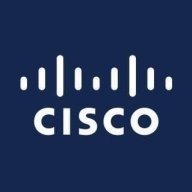


Cisco Vulnerability Management and Unified Vulnerability Management compete in vulnerability management. Cisco leads in predictive analytics and actionable insights, whereas Unified is preferred for its comprehensive scanning tool integration and broader vulnerability coverage.
Features: Cisco Vulnerability Management offers advanced analytics, predictive capabilities, and risk scoring. Unified Vulnerability Management provides extensive scanning tool integration, detailed reporting, and a comprehensive approach.
Ease of Deployment and Customer Service: Unified Vulnerability Management offers straightforward deployment and responsive customer service. Cisco Vulnerability Management may require additional customization but benefits from robust customer support.
Pricing and ROI: Cisco Vulnerability Management is cost-effective, offering strong ROI through data-driven insights. Unified Vulnerability Management, albeit with a higher cost, justifies expenses with its wide-ranging features and integrative capabilities.


Zafran Security integrates with existing security tools to identify and mitigate vulnerabilities effectively, proving that most critical vulnerabilities are not exploitable, optimizing threat management.
Zafran Security introduces an innovative operating model for managing security threats and vulnerabilities. By leveraging the threat exposure management platform, it pinpoints and prioritizes exploitable vulnerabilities, reducing risk through immediate remediation. This platform enhances your hybrid cloud security by normalizing vulnerability signals and integrating specific IT context data, such as CVE runtime presence and internet asset reachability, into its analysis. No longer reliant on patch windows, Zafran Security allows you to manage risks actively.
What are the key features of Zafran Security?
What benefits can users expect from Zafran Security?
In industries where security is paramount, such as finance and healthcare, Zafran Security provides invaluable protection by ensuring that only exploitable vulnerabilities are addressed. It allows entities to maintain robust security measures while allocating resources efficiently, fitting seamlessly into existing security strategies.
Cisco Vulnerability Management equips you with the contextual insight and threat intelligence needed to intercept the next exploit and respond with precision.
Prioritization is no longer a dark art—it's data science. Advanced algorithms, combined with rich internal and external intel, offer recommended fixes that will lower risk in as few moves as possible.
Track vulnerability fluctuations and forecast weaponization with up to 94% accuracy, giving you the chance to remediate high-risk vulnerabilities before bad actors can mount an attack.
With more than 19 threat intelligence feeds at your fingertips, you gain a comprehensive view of emerging threats, shifting trends, and your own risk profile.
A single source of data-verified truth aligns security and IT, eliminating friction and freeing up resources. And intuitive, simplified risk scores help you generate reports anyone can understand.
Unified Vulnerability Management streamlines the identification and management of security risks. It's designed to enhance cybersecurity efforts by providing consolidated tools and insights for managing vulnerabilities.
Unified Vulnerability Management plays a crucial role in cybersecurity by centralizing tools and processes, optimizing risk management with real-time insights, and offering customizable reporting. Its integrated approach allows organizations to address threats promptly, ensuring a proactive security posture.
What are the key features of Unified Vulnerability Management?In sectors like finance and healthcare, Unified Vulnerability Management is implemented to meet compliance requirements and protect sensitive data. Its robust capability to manage complex environments supports integration into diverse organizational frameworks, ensuring tailored solutions for industry-specific challenges.
We monitor all Risk-Based Vulnerability Management reviews to prevent fraudulent reviews and keep review quality high. We do not post reviews by company employees or direct competitors. We validate each review for authenticity via cross-reference with LinkedIn, and personal follow-up with the reviewer when necessary.